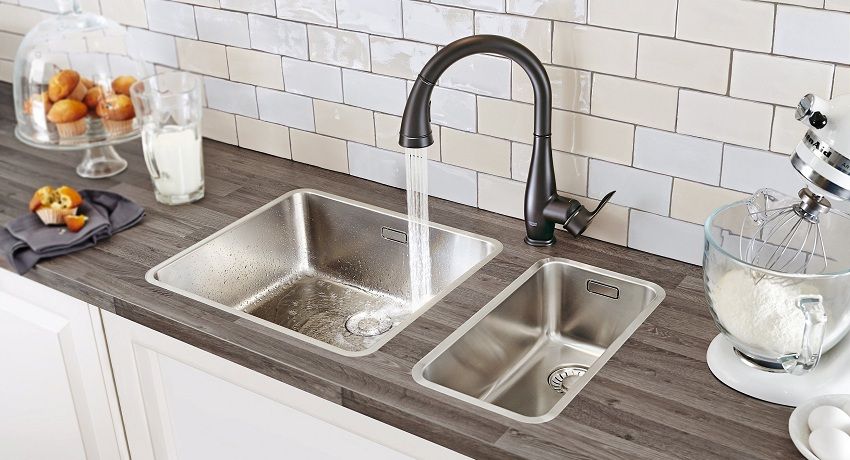The external environment does not spare even the highest quality materials used for construction or repair. Premature wear, cracks, destruction of surfaces, the formation of efflorescence and mold not only spoil the appearance of buildings, but also directly affect the durability of structures. Special impregnations, such as water repellents for concrete, bricks, stone and paving slabs, will be able to avoid constant repair costs and prevent wear on the facades.
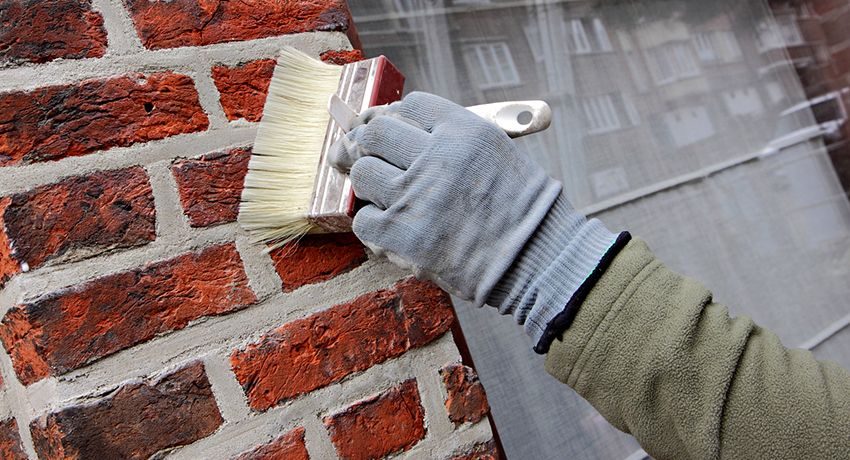
Hydrophobization: what it is and what it is used for
In construction, the term hydrophobization is understood as imparting properties to a material that reduce its ability to be wetted with water. Such a need arises because of the porous structure of facade cladding materials and their ability to absorb groundwater and sediments. The main negative consequence of this phenomenon is an increase in the risk of structural failure due to the formation of cracks, the gradual leaching of material and premature aging.
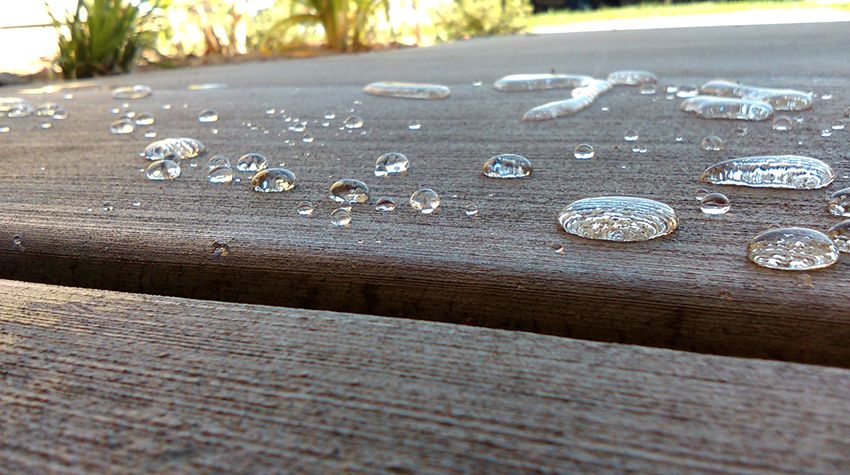
In addition, precipitation and groundwater are mixtures of salts of different composition, which, when interacting with building materials, form new chemical compounds. The result of their influence can be visually observed in the form of high-altitude efflorescence, which makes the facade of the building very unsightly. Purpose of the use of waterproofing:
- protect the material from penetration of moisture;
- improve the thermal insulation characteristics of the treated surface;
- fully protect against the formation of efflorescence;
- to increase the resistance of structures to corrosion and low temperatures;
- prevent the formation of lichen and mold colonies on the surface;
- strengthen the structure of materials and, consequently, increase their strength.
Important! Water repellency reduces water absorption by materials by 15-25 times.
By type of application hydrophobization happens:
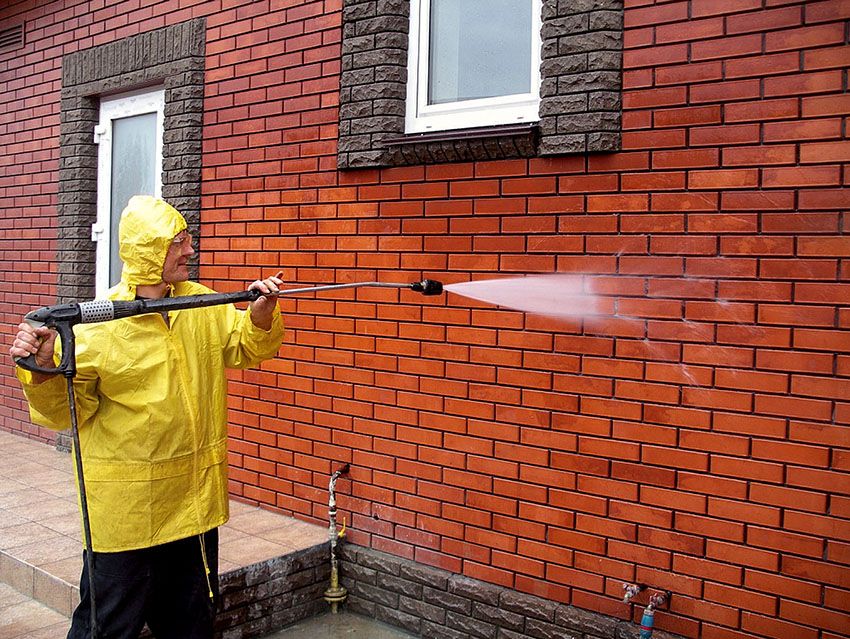
- surface, when a special composition for processing is applied only on the top layer of material – such protection lasts for about 10 years;
- volumetric, when special holes are drilled in order to better impregnate with a special compound – it is performed once, for the entire duration of the structure’s operation.
To increase the water-repellent properties of materials in construction, special compositions are used for surface treatment – these are water repellents. What is special is contained in their composition and how they can protect the surface, try to understand this article.
The principle of the special impregnation is that it does not remain on the surface of the material being processed, but is absorbed by it. Therefore, protection against water is not superficial, but internal in nature, aimed at isolating the capillaries of the material. Water repellents are able to penetrate to a depth of 15-20 mm – this forms a protective insulating layer.
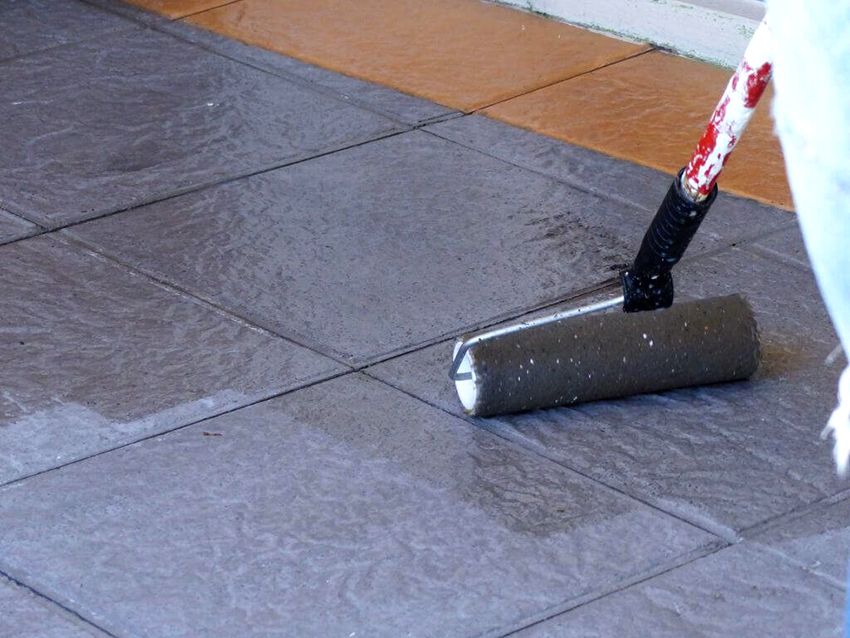
Features of the properties of water repellents:
- the ability to process the surface of any building material, while distinguishing impregnations are universal (used for a number of surfaces) and narrowly targeted (they work with only one type of surface);
- practically do not reduce vapor permeability (loss of 10-15%), which allows materials to maintain air exchange and eliminate the formation of fungus and mold;
- help protect the surface from dust and dirt, their easy removal by rain;
- universality of use, allowing to apply the mixture independently or as an additional component in the formation of facade surfaces;
- because of their transparency, they do not change the appearance of the structures, and in some cases even help to improve it;
- give building materials additional qualities, such as frost resistance (3-5 times) and corrosion protection (1.5-2 times);
- they postpone the deadlines for subsequent repairs: the next treatment will be required in 10 years, and in some cases it can be completely avoided;
- the price of water repellents is significantly lower than the cost of other waterproofing options.
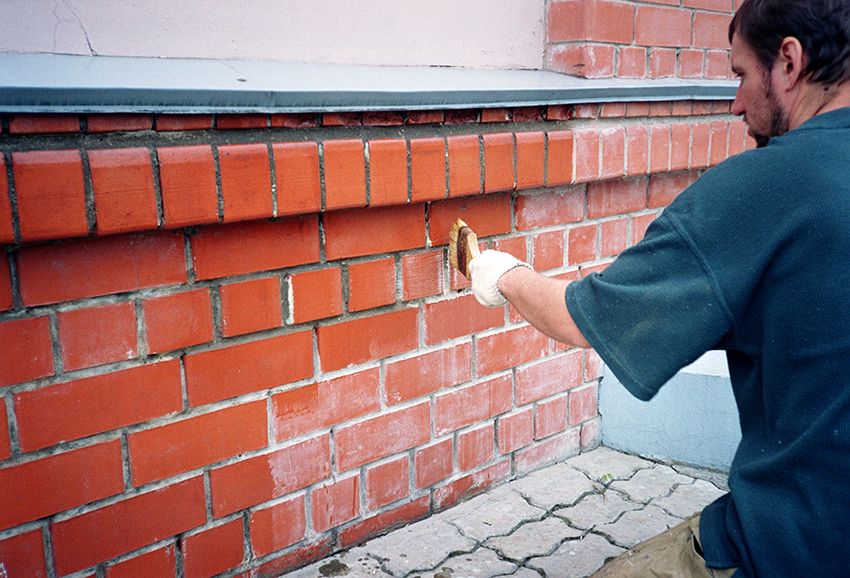
Specialized impregnations for surface materials are produced by the industry in mixtures or concentrates and are diluted in certain proportions with water, but there are those that are completely ready for use. By chemical composition, they are divided into water-based and silicone substances. Silicone water repellents are considered to be the best, since they have advantages in chemical and thermal resistance, they have the ability to penetrate deeper into the material. They are less susceptible to external influences, and therefore, form a more durable protection.
Important! Water repellency must be carried out at the construction stage of the facilities in order to immediately foresee the protection of the facade from the damaging effects of water.
Concrete is one of the most popular building materials in the construction of buildings and structures, so its properties and composition are important for the further operation of facilities. The construction of the foundation, walls, platforms, the use of brick laying and the formation of reinforced concrete structures, etc., leave a definite imprint on the requirements for concrete. The material is durable, but has a low moisture resistance threshold due to increased porosity. Water, falling into these pores, actively contributes to the destruction of the concrete structure and the formation of mold, causing frequent repairs. Particularly affected basement parts of buildings and the foundation.
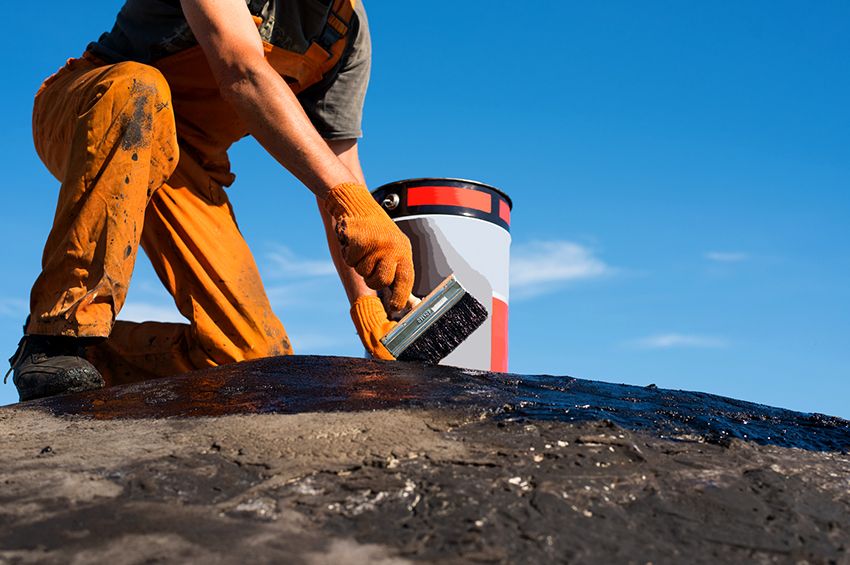
Water repellents in concrete can be added in two ways: at the stage of its manufacture and applied to the surface of finished structures and structures. The use of an impregnation agent as an additive in a concrete solution can additionally reduce costs when organizing thermal insulation.
In addition to the general properties, all hydrophobic additives for concrete have the following additional characteristics:
- increase the density of the solution and contribute to an increase in the compressive strength of concrete (by 30% of the starting standard values);
- can be a substitute for plasticizers that are used in the mixture to impart plasticity;
- exclude the cost of repairs, since they significantly prolong the life of the buildings;
- raise the water resistance of concrete to brand W;
- increase frost resistance;
- if a concrete frame is used with concrete, then the additives simultaneously protect it from corrosion.
The Internet is replete with various ideas and recipes, it was not without tips on how to make a water repellent for concrete with your own hands. You can, of course, try, but there is a high probability that the result will be worse than it is imagined, or it will be completely absent. Therefore, it is recommended to buy a ready-made water repellent for concrete, which is better to choose – in this matter it is necessary to proceed from the purpose and the desired end result.
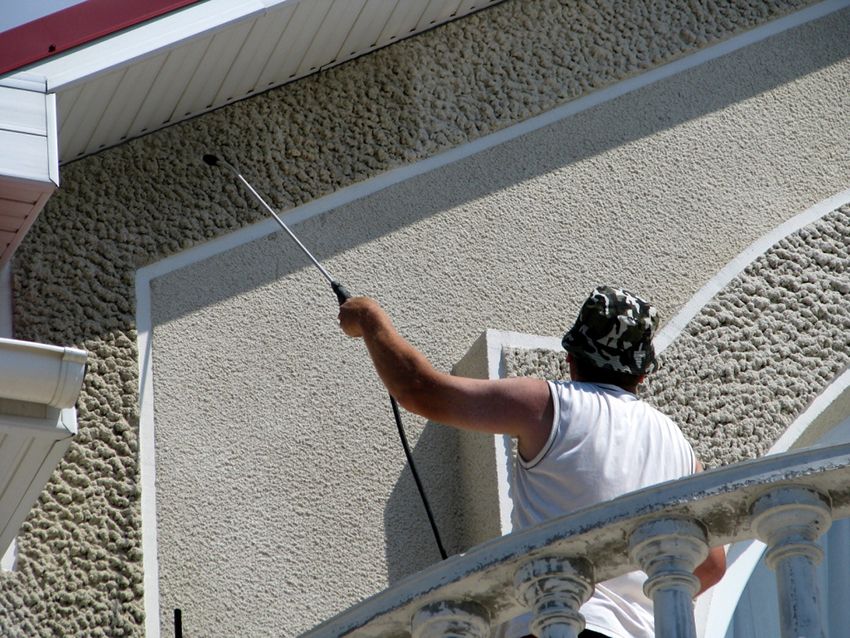
Helpful advice! When choosing an impregnation for concrete, be sure to pay attention to its purpose. Water repellent for aerated concrete and for concrete – they are different in fluid properties.
The price of a water repellent for concrete depends on the brand and manufacturer selected. Also, it can affect the complexity of the mixture, allowing to obtain more positive qualities for the treated surface. Silicone-based fluids will cost more, but their protective properties are higher.
Brickwork is a bright indicator of the influence of environmental conditions on the destruction of building surfaces and structures. No matter how strong the properties of a brick are in terms of density, it still remains a rather porous material that needs special treatment. Hydrophobic impregnation for bricks can help protect this material from moisture and dirt, premature failure, cracks.
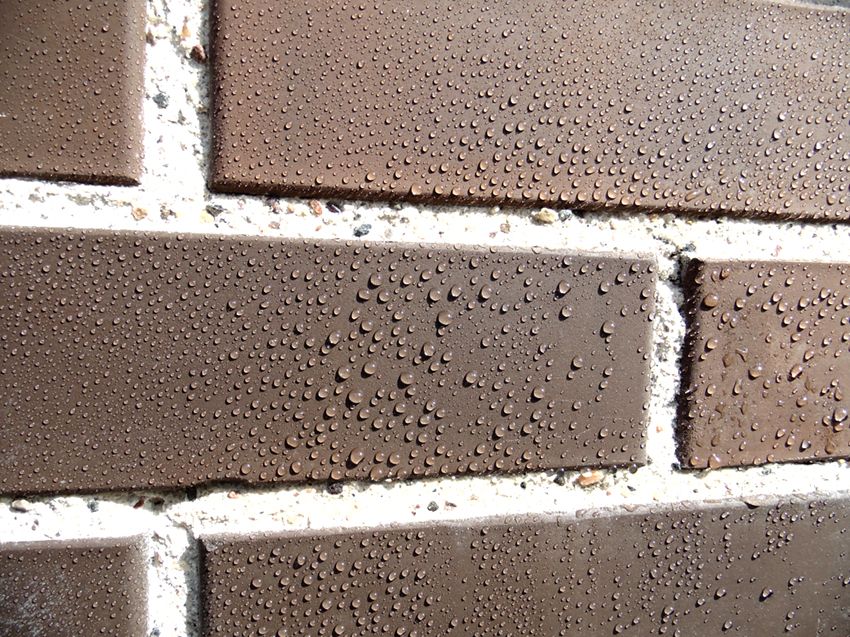
On brick facades most often form efflorescence, spoiling the appearance. To eliminate them, special countermeasures are applied that temporarily fix the problem. However, to consolidate the cleaning effect and prevent the re-appearance of efflorescence, it is recommended to apply the treatment of bricks with water repellents. Only he is able to cope with a similar task.
On sale there is a wide choice of water repellents for bricks. Which is better to choose: universal for any surfaces or used only for this material? If there is a need to treat only brickwork, then you should look at specialized means of impregnation. They are differentiated by concentration, level of protection and take into account the type of lining. The price of water repellents for bricks will depend on these factors.
When processing brick surfaces in order to impart water-repellent and other protective properties to them, it is possible to simultaneously somewhat improve the visual characteristics of the facades. For this purpose, water repellents with the effect of a “wet stone” are used. Tiprom M is one of such tools that can give a lightweight gloss to the brickwork and emphasize the color of the brick base.
Helpful advice! Before applying a water-repellent with a “wet stone” effect on a brick surface, test the product on the sample and wait 3-5 days until the protective layer is completely formed.

Artificial and natural stones are often used for exterior cladding of facades, fences, when organizing tracks, as well as for interior textured interior decoration. The material may have a different structure – polished or embossed, but each of them has the ability to absorb moisture. Active moisture absorption affects the appearance, leads to the formation of mold and overgrowth with moss or lichen, especially if the outer surface is embossed. When the temperature drops, moisture that has penetrated into the stone leads to cracking. To combat these negative factors apply protection by applying hydrophobic agents.
Water repellent for artificial or natural stone is selected depending on the type of surface and the desired effect. There are universal tools that are suitable for all types of surface. They are beneficial in the case when it is necessary to process the facade of composite materials, including a stone coating. Specialized liquids used exclusively for application to stone are no less effective. They can be designed exclusively for interior work and be safe for food. This is important for the treatment of sinks and countertops in the kitchen.
Helpful advice! When choosing a hydrophobic agent for external treatment, pay attention to whether it has UV protection, due to which the material will last longer.
Water repellents for a stone can be intended only for protection or to include such additional options as the organization of the “wet stone” effect. After processing, the top layer acquires a small glossy coating that makes the stone surface brighter. On packages with hydrophobic liquid, always indicate similar properties. For this purpose, suitable, for example, water repellent Optimist. Responses he has positive, especially with regard to the processing of the outer stone cladding.
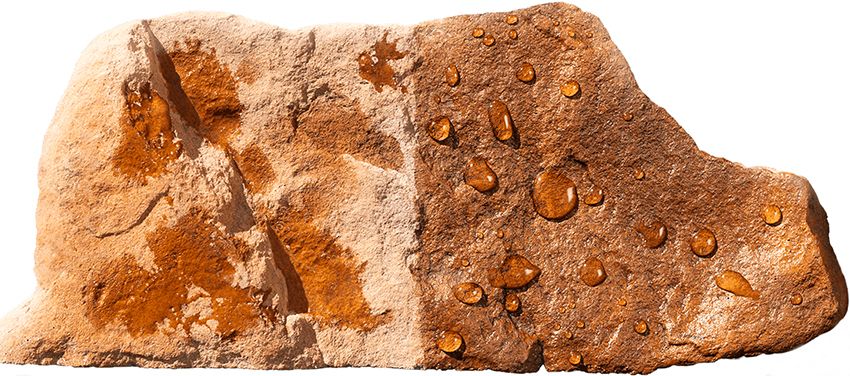
Before large-scale application of a water-repellent onto the stone surface, check its action on the cladding residues or in an inconspicuous place. So you can assess the degree of drying, processing speed, the need to cover the second layer and the quality of the “wet” effect (if you choose this tool).
The basis for the production of paving slabs is concrete. It determines the basic properties of this facing material, that is, porosity. The danger is that water leaks through the numerous pores into the paving slabs. It causes the greatest harm to this material in winter, when, freezing, it increases in volume and contributes to the formation of cracks of various sizes, up to the complete split of the tile. If frost forms on the surface of the material, the coating often deforms when it is carelessly spalled.
Pay attention to the fact whether it is concentrated or ready to use. Their cost varies, but the final volume of treatment fluid will also be different. For large areas that require coating with hydrophobic agents, it is more advantageous to choose concentrates.
Follow the recommendations, choose the right materials and treat the facing materials with water repellents in time, so that they will maintain an excellent appearance for a long time without repair.

